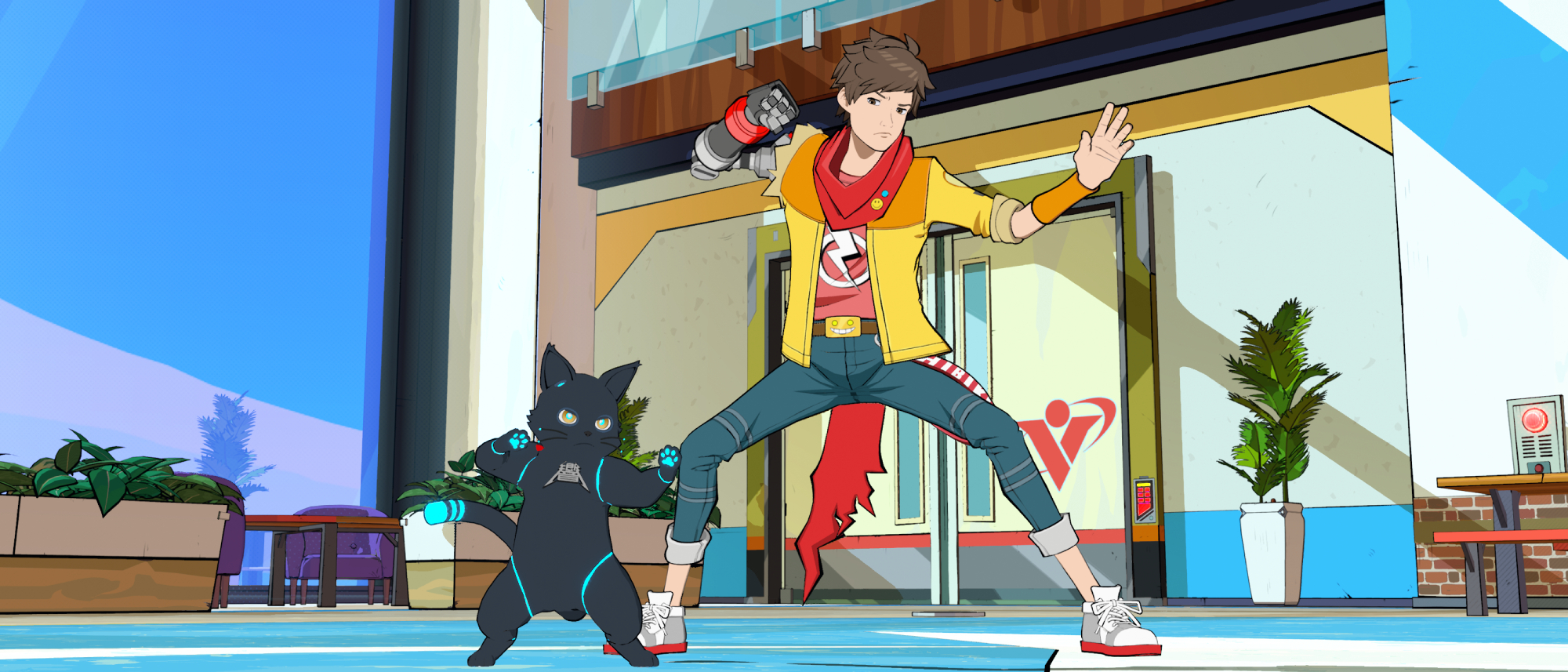Laptop Mag Verdict
Hi-Fi RUSH’s language is the music, turning us into the star performer within its rhythmic world. Every moment is exhilarating, enhanced by phenomenal cel-shaded animation, excellent vocal performances, and unforgettable battles interwoven with a rockin’ soundtrack.
Pros
- +
Rhythmic world is hypnotizing
- +
Plenty of variety in enemies and areas
- +
Lovely animations and performances
- +
Soundtrack is an absolute bop
- +
Unforgettable boss fights
Cons
- -
Fire isn’t rhythm friendly
- -
Some unexciting mini-games
Why you can trust Laptop Mag
It’s commonplace to experience periods where we feel detached from something we love for one reason or another. I haven’t been in a gaming mood since October, 2022. Even after starting beloved titles like God of War: Ragnarok, Ghost of Tsushima, and Dead Space 2, nothing was sticking and I hadn’t beaten a single game since. Then Hi-Fi RUSH dropped.
Hi-Fi RUSH had me fall in love with the medium all over again, but its ability to reinvigorate my perception of gaming doesn’t just boil down to it being great; it’s because I have never played anything quite like it. From its phenomenally expressive cel-shaded aesthetic and adorable animations to an exhilarating sense of rhythm complimented by awesome hack-n-slash combat, this is an experience few will never forget. Best of all, it’s wrapped up in a shell that brings me back to cartoons of the early 2000s while fundamentally reminding us of the best 3D games from the earliest iterations of the medium.
Hi-Fi RUSH is one of those rare gems that ignites a thought, making us realize that video games can be so much more than what they are now. Tango Gameworks knocked it out of the park, and I cannot recommend it enough. It easily sits among the best PC games and best Xbox Series X games.
Taking down Vandelay
Hi-Fi RUSH follows Chai, a young college dropout with aspirations of becoming the world’s greatest rockstar. He’s a bit gullible, so in an attempt to secure himself a cool robotic limb, he signs up for an experimental program that removes his actual arm and replaces it with a metal one. However, the process goes wrong when his MP3 player lands on top of him before the procedure, causing it to embed within his chest.
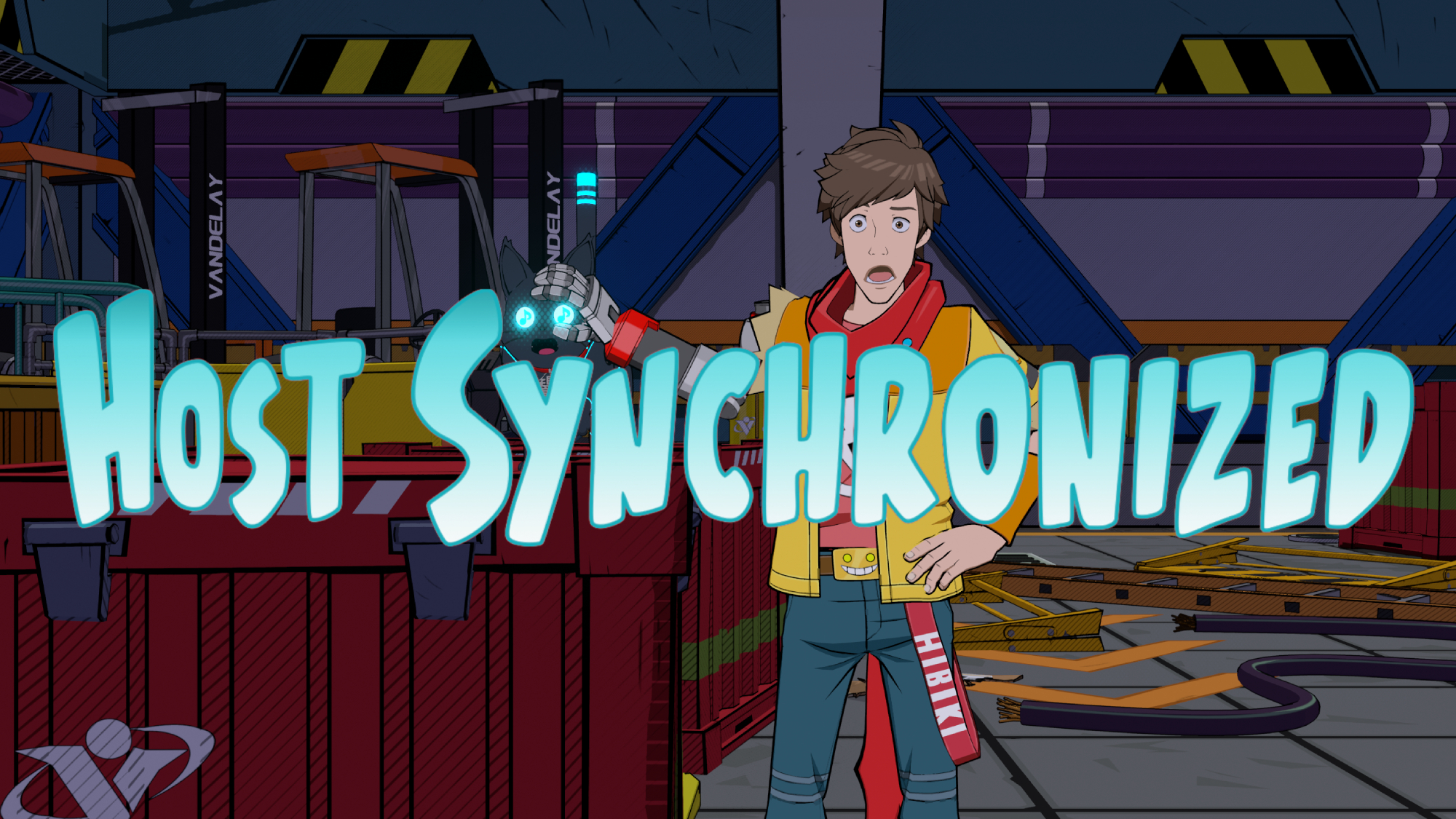
This forces the world around him to adhere to the beat of his music, and as he’s branded a “defect” for his differences, he attempts to escape the facility before meeting an adorable robotic cat named 808. When accidentally making physical contact with her, the two somehow blend their powers, allowing her to turn into a little floating orb that assists him with visualizing the beat. From here on, the game introduces us to a group of characters who constantly bicker and banter. Their love for one another brings them together, and it’s wonderfully executed.
Peppermint stole my heart—she’s established as the rebel with a mysterious past who plans to stop Vandelay from executing their super secret project. Her short-temper with Chai and pushiness in forcing him to do the right thing creates a fantastic dynamic between the two, as she constantly berates him for his ridiculous plans.
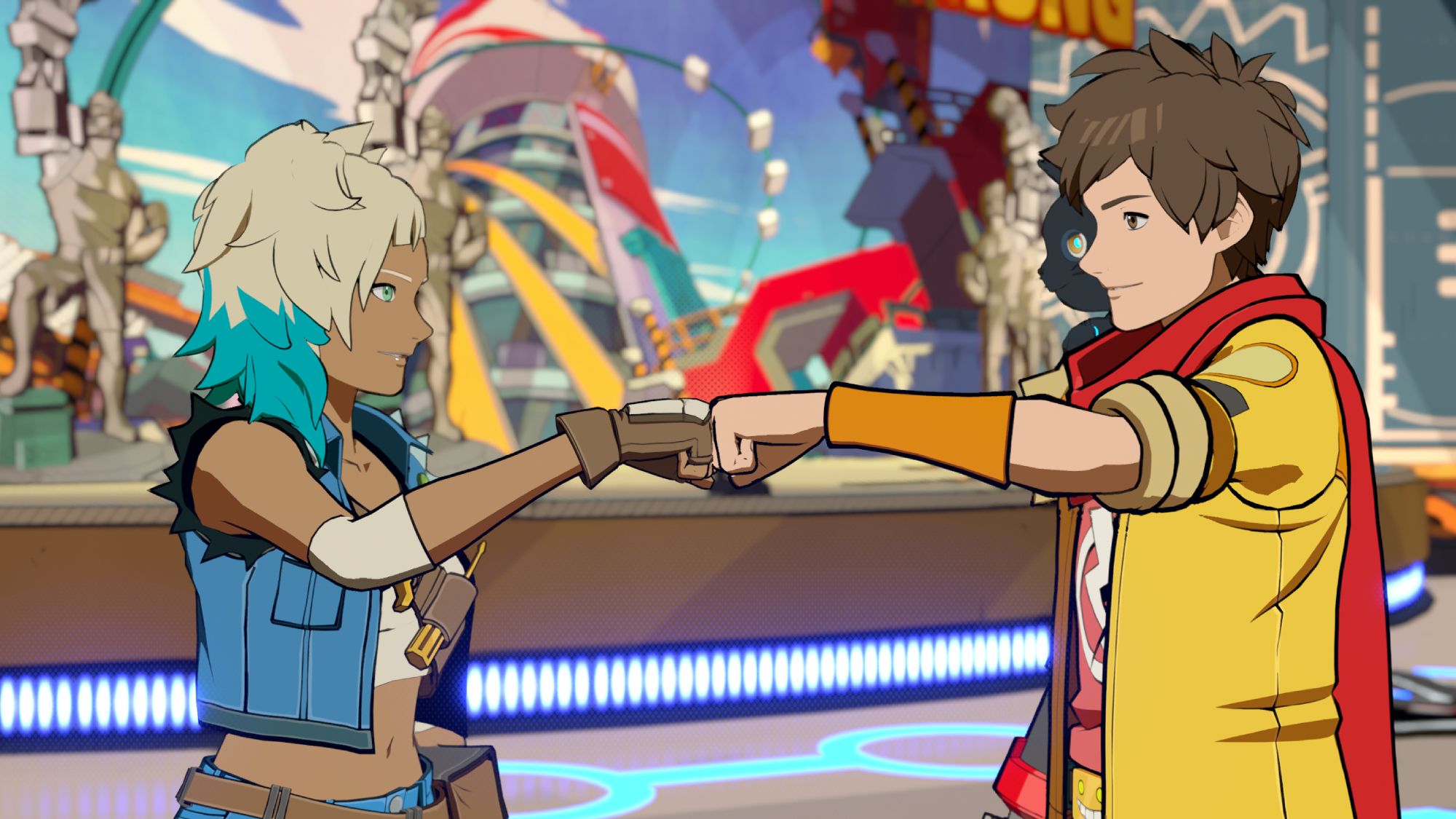
We witness the two warm up to one another as the story progresses, with their relationship becoming sincere and supportive in ways that feel surprisingly authentic. I also really appreciate that this tension doesn’t shift into a stereotypically forced tale of romance, as the game instead keeps them as best buds who’ve learned to appreciate one another.
Sign up to receive The Snapshot, a free special dispatch from Laptop Mag, in your inbox.
You are the beat
The world of Hi-Fi RUSH was advertised as a place where everything moves with the music, but I hadn’t anticipated how impactful that design choice would be. It’s not just obstacles that sync with the beat; it’s enemy attacks, cutscenes, boss movesets, the player’s combos, platforms and even non-interactable assets placed around the environment.
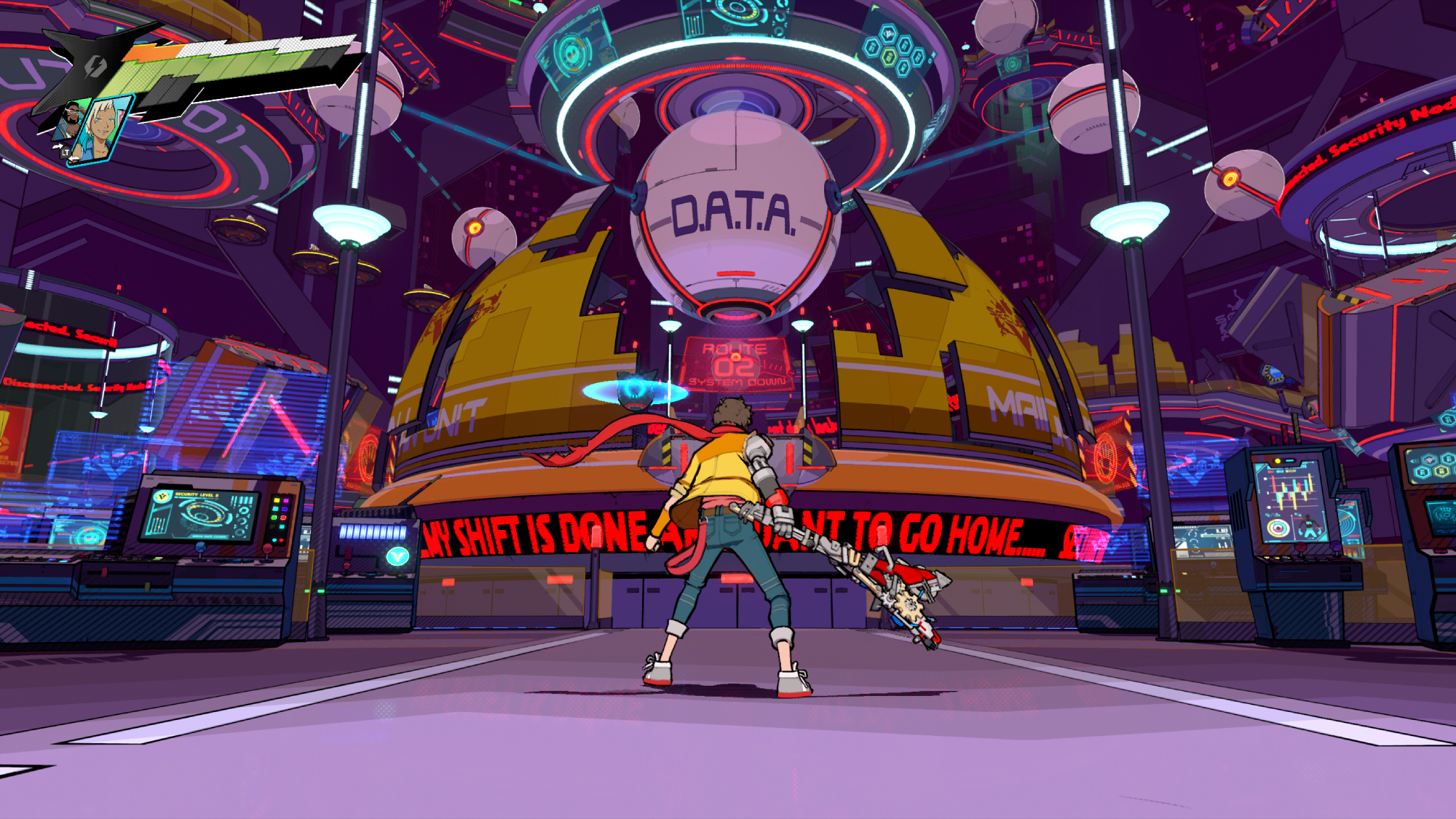
This isn’t just a visual quirk, though. When immersed into a world where everything moves with a song, the player will adapt habits where they do so as well. It took me a couple of levels to get used to it, but nearly every dodge, parry, jump, attack and special move I executed was in-tune with whatever track graced my ears. There were moments where the music subconsciously infected my brain, as I didn’t even realize how perfectly I found the melody and was pressing alongside it in combat.
Since I was playing on very hard difficulty, this ingrained rhythm went off-track whenever I was in a difficult fight, as my mind is programmed to spam buttons during moments of panic. But when I was calm and let the game take me, it felt like my entire body would adapt to the world’s language of musical movement. Boss fights are especially euphoric, as I felt constantly elevated by the transition from the first or second phase of a fight into a later one, where the chorus and vocals come in full swing as Chai says some cheesy one liner.
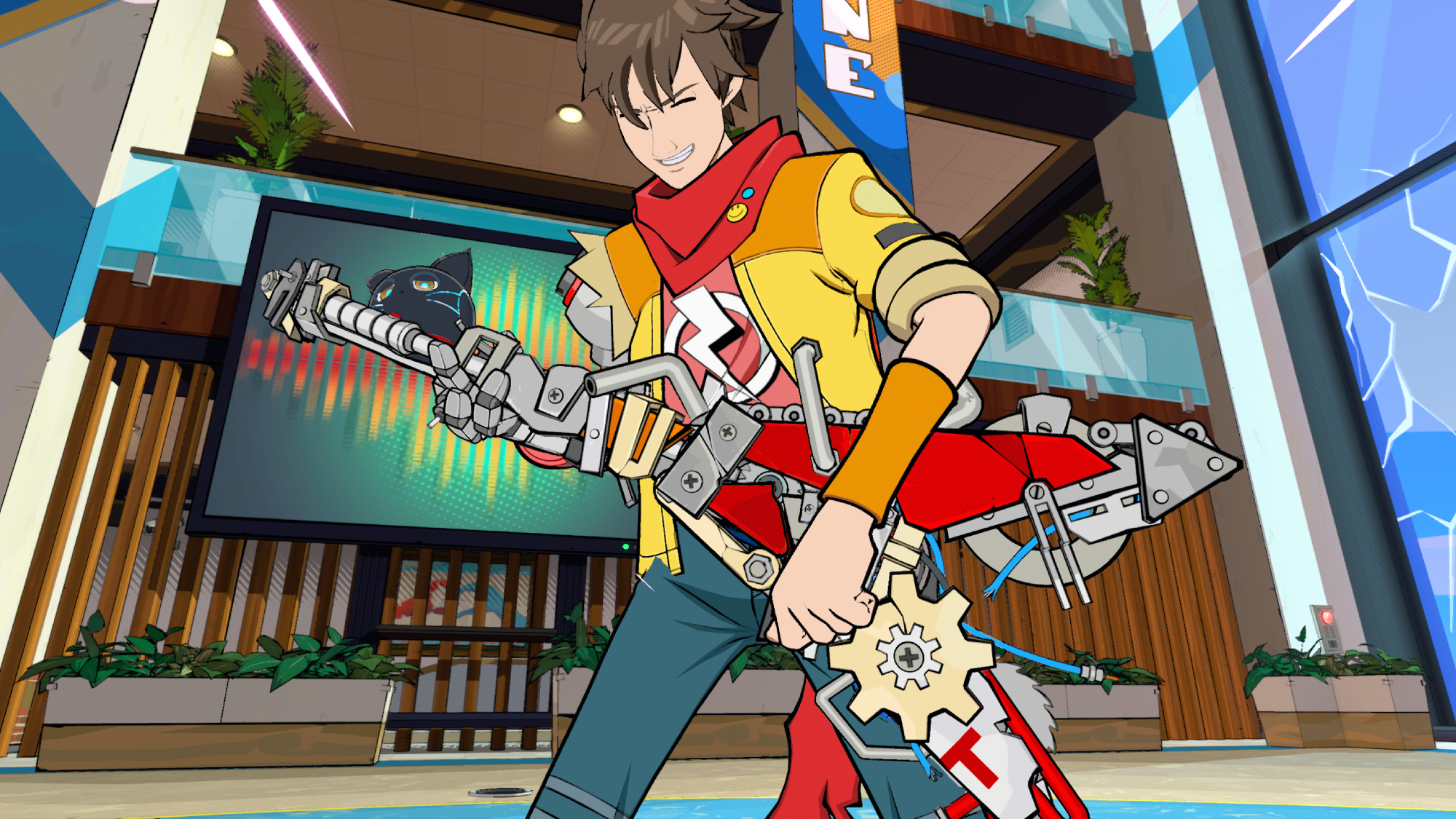
The rhythm in Hi-Fi RUSH is fantastic, but it’s not perfect. Late-game enemies with fire-based abilities can set Chai ablaze, and there’s no music-adjacent method of dealing with this problem when it happens. When you’re on fire, you need to move the stick wildly back and forth to put it out, which always interrupts the rhythm and puts the player in a position where they are now forced to panic.
Other attacks, like grabs from big enemies and bosses, behave in rhythm. Getting your butt whooped feels nowhere near as bad when the giant mechanical bird throwing you around the arena seems to respect the nature of the music. I never felt that with the burning, as I had no choice but to stop listening and panic wildly when it happened. Tango Gameworks might’ve done this on purpose as an incentive to dodge those attacks so you don’t get your flow interrupted, but nearly every other punishment in this game adheres to the music.
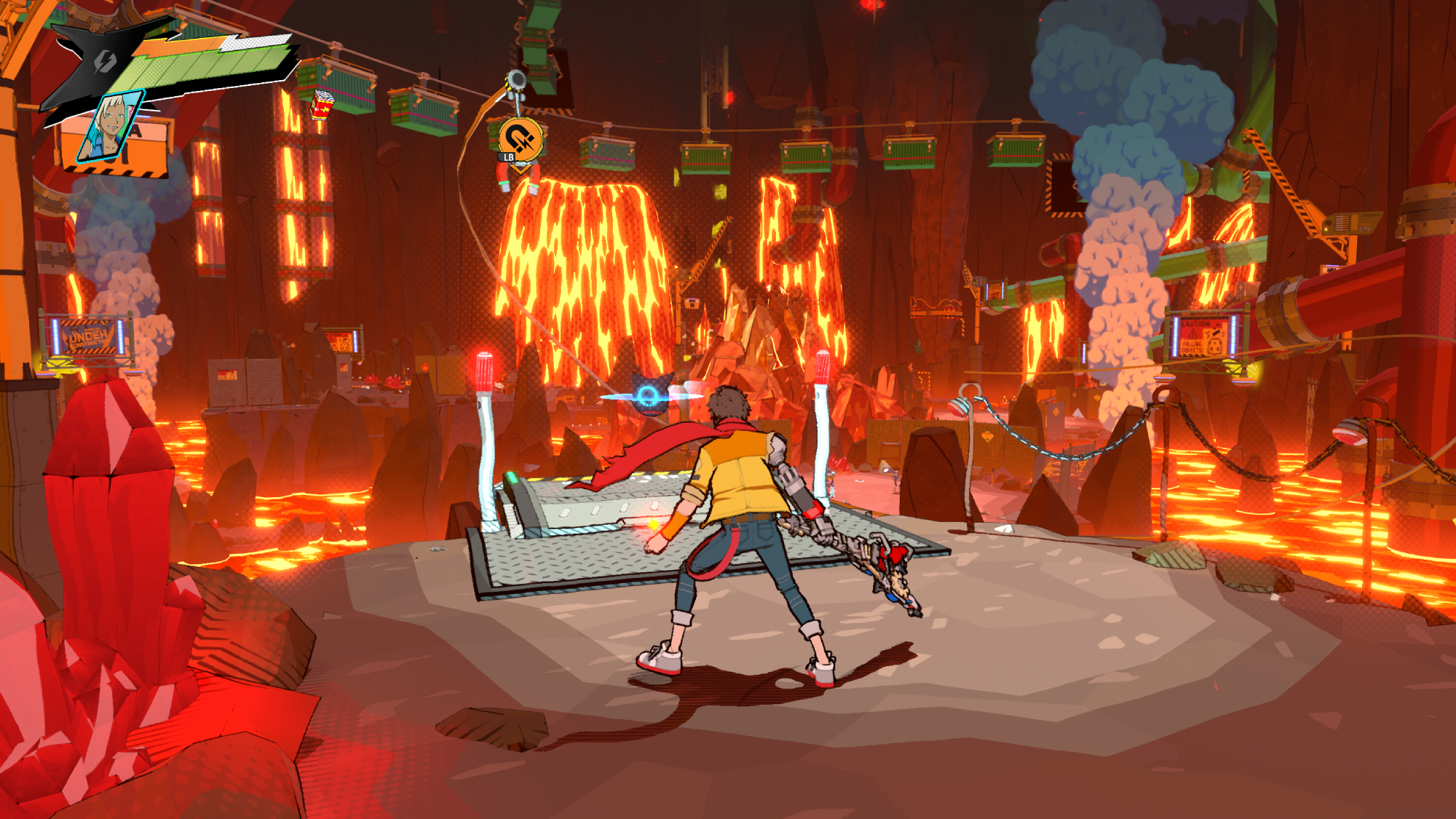
Certain rhythm mini-games could have been more exciting, as well. There’s one where the player gets prompts thrown to them on a music bar, but there’s a noticeable lack of impact whenever getting a note right. The sound effect that plays sounds a little muffled and splodgy, while the visual feedback isn’t as immediate and satisfying. Compared to the parry and dodge mini-game where you have to memorize a pattern in a certain order to instantly defeat a difficult enemy, the bar-based one feels a little empty.
Each encounter is a concert
Hi-Fi RUSH handles its moment-to-moment action superbly thanks to how combat is naturally interwoven with the music. Parrying isn’t satisfying just because you successfully deflected an enemy’s attack; it’s especially delightful due to it matching that rhythm, as subverting an enemy at the exact moment the beat hits feels divine.
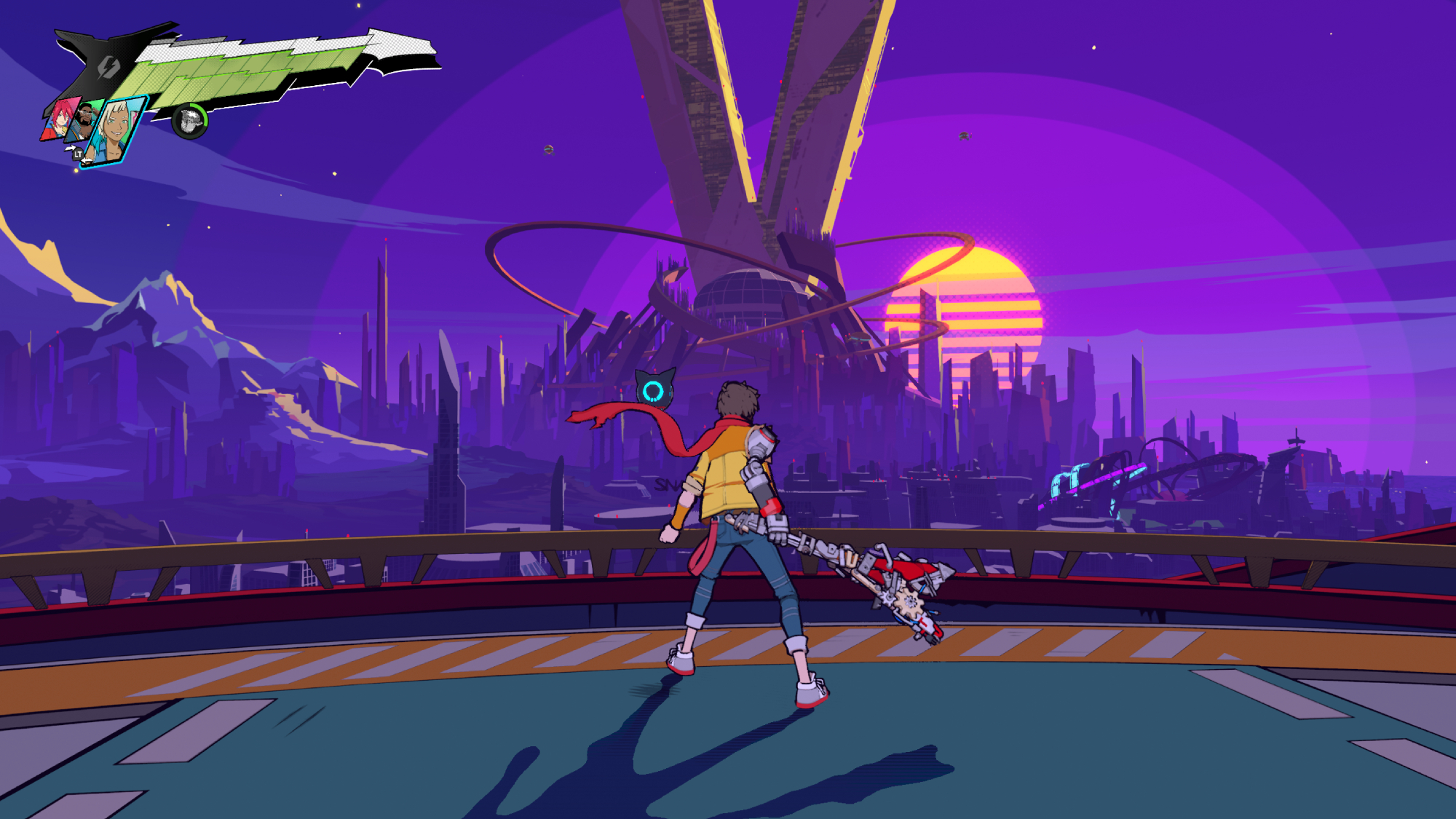
This applies to attacks and dodges as well, and as the player’s performance progresses from D to S ranking, the music heightens alongside their adherence to the tune. This design effortlessly blends the satisfaction of a correct note hit in a rhythm game with the intensity of battle found in action games.
Unlike Bayonetta or Devil May Cry, Hi-Fi RUSH’s variety is not based on different weapon types. You’re always using a faux-guitar made of metal scrap, but there’s a lot to do in battle. You’ll find yourself swapping between three summonable characters, throwing out tons of special abilities, and utilizing variations between light or heavy attacks to execute different moves. I won’t fool you though, this has nowhere near as much depth as the aforementioned games.
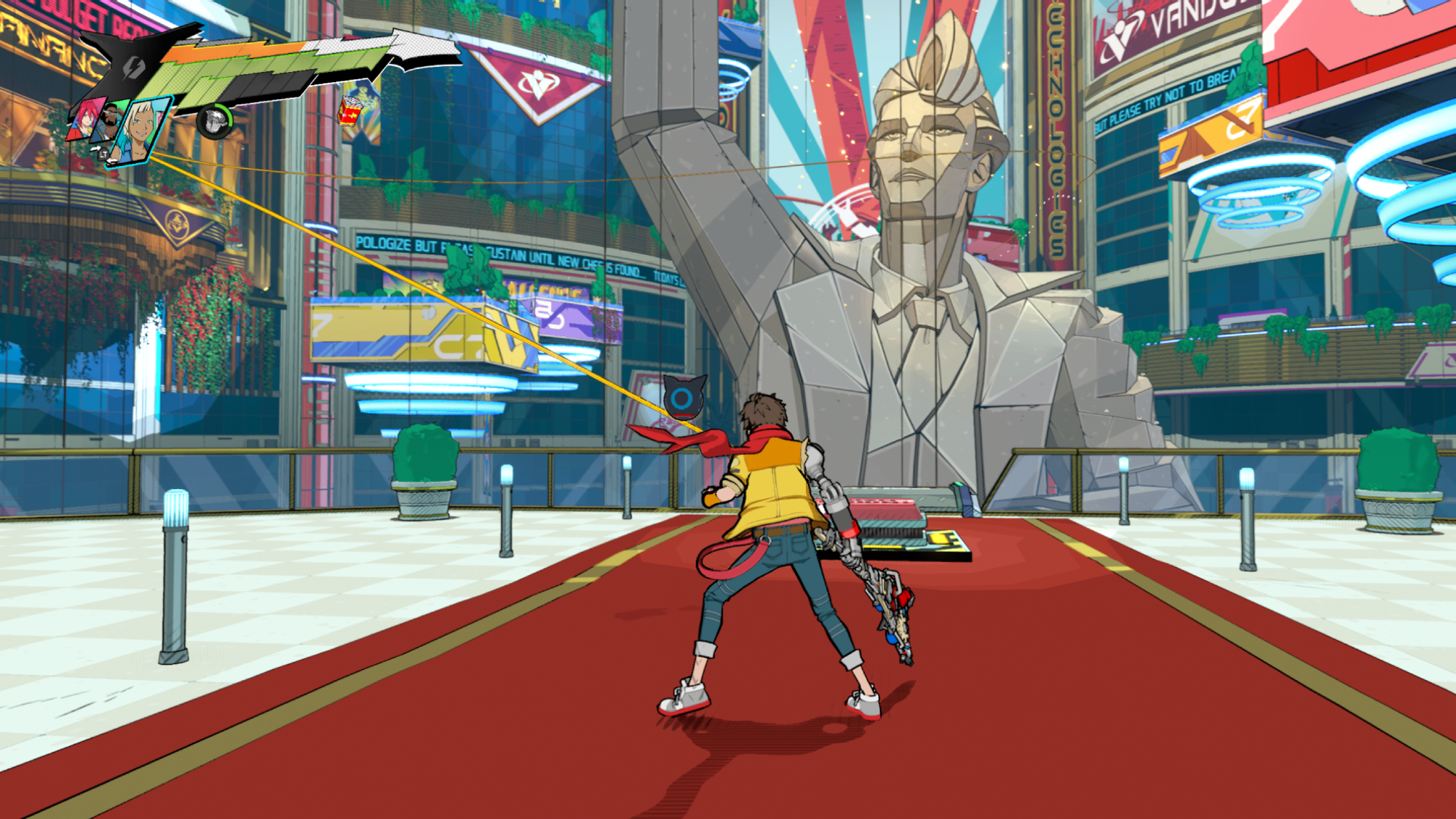
Bayonetta and Devil May Cry don’t expect the player to understand how to execute the greatest combos immediately; most find themselves getting poor rankings and dying a lot on their first playthroughs (I’m one of them). Hi-Fi RUSH is nothing like this. It instead offers an accessible hack-n-slash that allows the player to perform well even when they don’t know what they’re doing. This is partially thanks to your hits staying on beat regardless of whether or not you actually pressed it at the right time, but the game is forgiving in general.
Foes telegraph attacks for long periods of time, every mini-game is pretty easy to get right on your first try, and enemies don’t do all that much damage. This isn’t to say Hi-Fi RUSH didn’t have challenging moments, but it is focused on allowing the player to feel the beat in a comfortable setting rather than testing their limits. After all, it would be really frustrating to have the pacing constantly interrupted by failure.
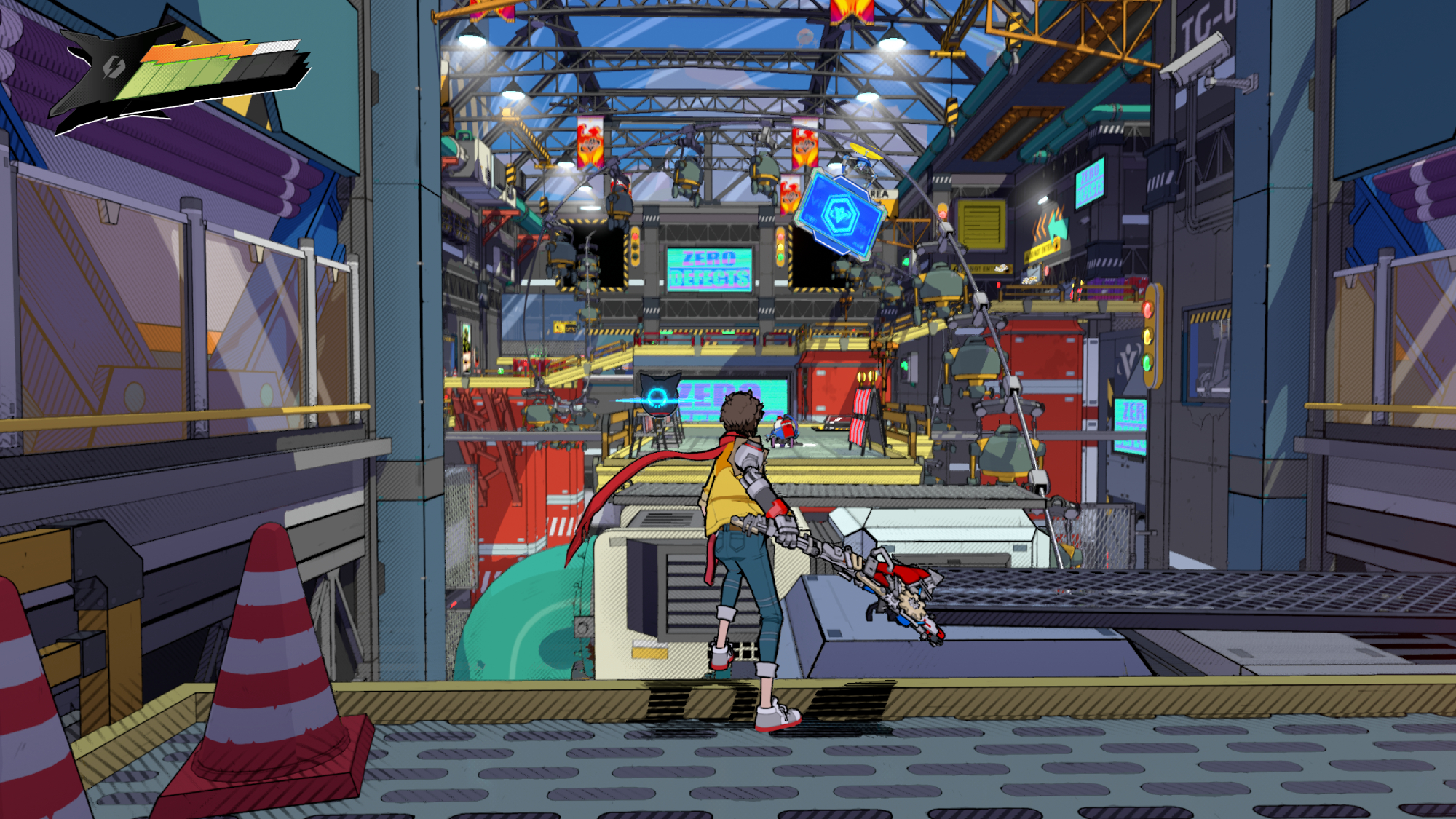
If you love the genre for its replayability and seeking the highest combos, you won’t find much challenge here. There is a post-game challenge tower that you can climb, alongside incentive to replay the game by hunting previously inaccessible collectibles or doing challenges, but the combat itself doesn’t have the same steep learning curve as other hack-n-slash games do.
I played on the very hard difficulty and managed consistent S rankings towards the latter half of the game, whereas it takes me multiple tries on a single level on normal difficulty in Bayonetta to even get through it without dying.
Lovable beyond all expectation
Hi-Fi RUSH doesn’t just play great, it’s lovable through every facet of its presentation. The player rushes into six departments themed around each head of Vandelay, an evil megacorporation planning on taking over the world through an experimental technology.
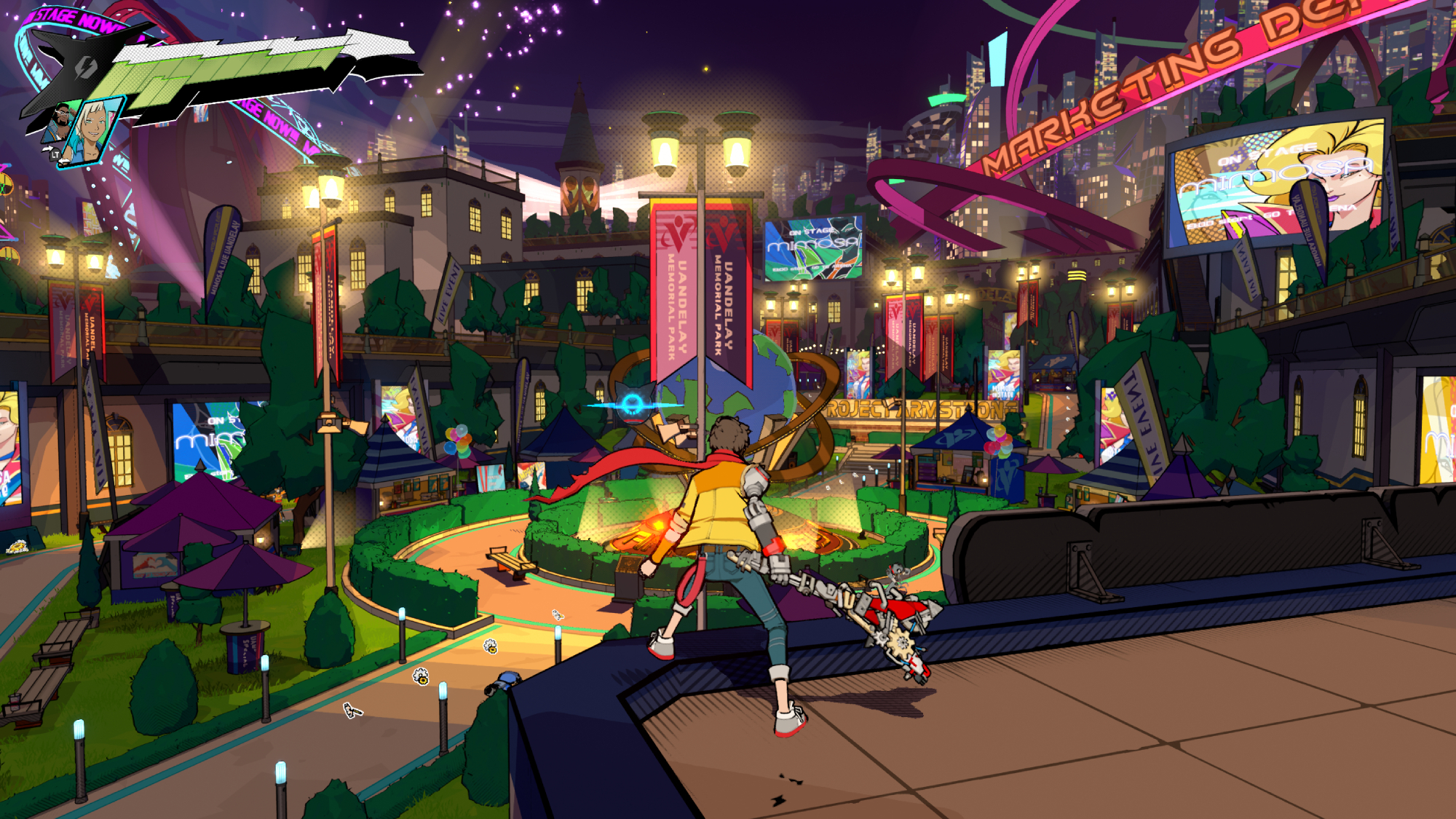
Whether you’re thrust into a volcanic cavern system deep beneath the Earth, an expansive metropolis owned by the antagonist corporation to “show off,” or a massive security tower full of lasers, each section of the game is a distinct and thoughtful representation of their leader. Best of all, they all boast specific styles of rock music and unique boss themes that grow in intensity as you perform better.
One moment still makes me crack up, where a museum meant to brainwash individuals into believing that Vandelay cares about the world features exhibits showcasing each of the enemies the player fights in the game. The museum has plaques claiming that all of these destructive forces are actually meant for at-home, everyday tasks. That giant robot with long arms and buzzsaws for hands? It’s actually meant to keep your garden trimmed!
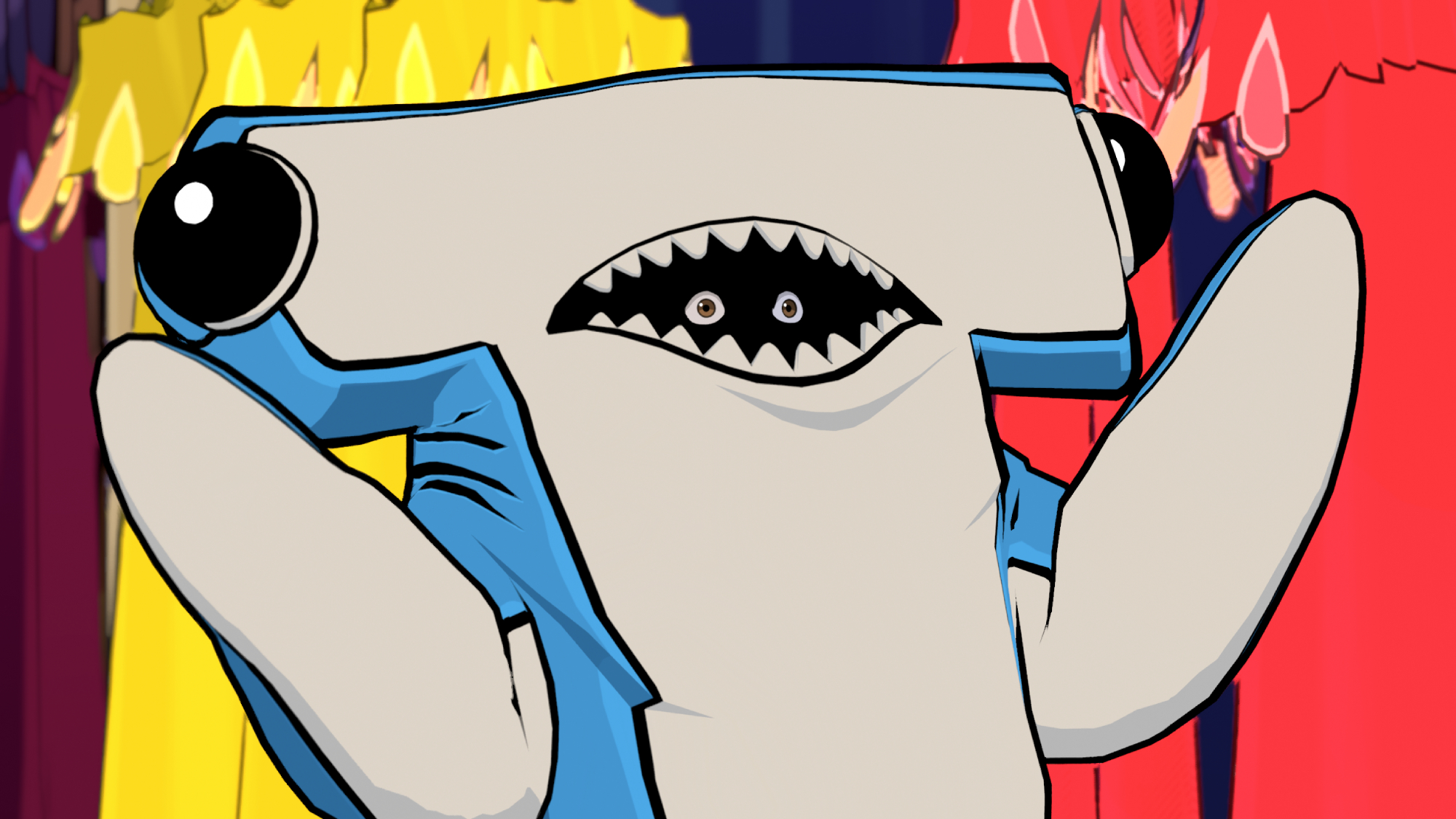
This charisma is visible even though certain boss fights where the developers decided that not every big battle needs to be traditional. Yes, most of them are typical hack-n-slash exchanges where they have multiple phases and you have to find the right time to strike, going wild with your combos, parrying and dodging whenever necessary, but some subvert expectations and focus on other key mechanics of the game, all adhering to its wonderful sense of rhythm.
Hi-Fi RUSH’s character animations and vocal performances are lovely as well, with a script full of quips that isn’t afraid to get ridiculous. Each interaction is brought to life by the game’s non-stop energy, with incredible moments like Chai getting sucker-punched so hard that he’s sent flying into a window pane, and at that exact moment of contact, the animation shifts from 3D to 2D as he crashes through several walls. Between every wave of enemies in a battle, the game cuts to Chai saying something funny while dropping his guitar, 808 licking herself, or the two of them fistbumping before the camera turns towards a selection of new enemies to fight.
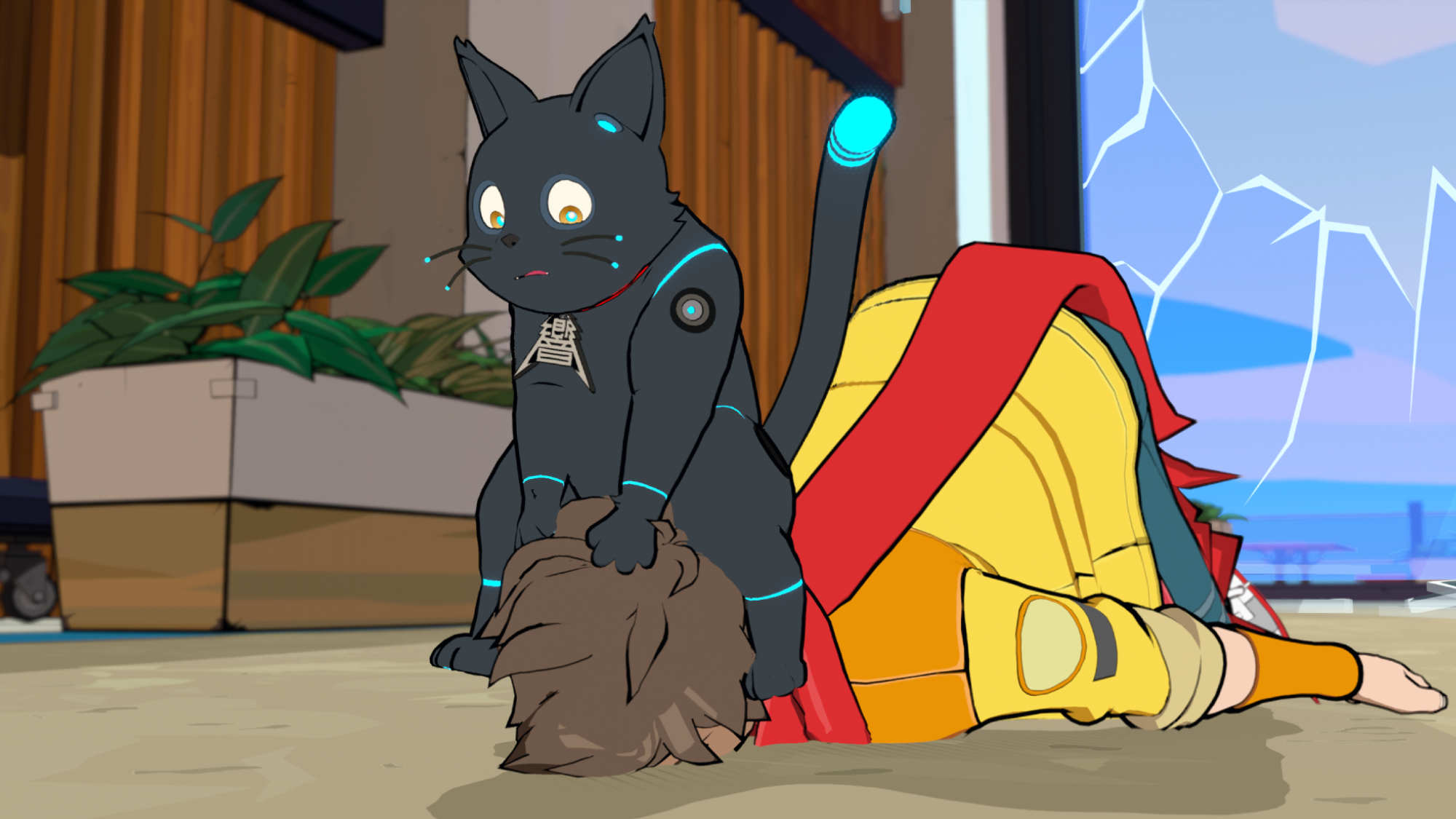
The things mentioned above are somewhat small details, but those little moments make this game as special as it is. I could go on forever talking about the adorable expressiveness behind 808’s animations, CNMN drawing on his face with a marker to showcase his emotions, or how every character dances to the beat when you’ve summoned them by your side. It feels as if each moment was crafted to move the player along with the world rather than treat them as an observer, making it easy to fall in love with Hi-Fi RUSH and its flawed cast of rebels.
Bottom line
Hi-Fi RUSH elicits a light-hearted joyousness that I haven’t felt from a video game in some time. The little details of this world, from the adorable animations to the intensity of music complimenting every hit and combo ender, are an absolute buzz.
Beyond just being phenomenal, HI-Fi RUSH reminds us why the medium is as important as it is. It highlights the potential of this industry when developers decide to do something different, and although it only just launched in January, it is destined to be looked upon as one of the best games of 2023.

Self-described art critic and unabashedly pretentious, Claire finds joy in impassioned ramblings about her closeness to video games. She has a bachelor’s degree in Journalism & Media Studies from Brooklyn College and five years of experience in entertainment journalism. Claire is a stalwart defender of the importance found in subjectivity and spends most days overwhelmed with excitement for the past, present and future of gaming. When she isn't writing or playing Dark Souls, she can be found eating chicken fettuccine alfredo and watching anime.
